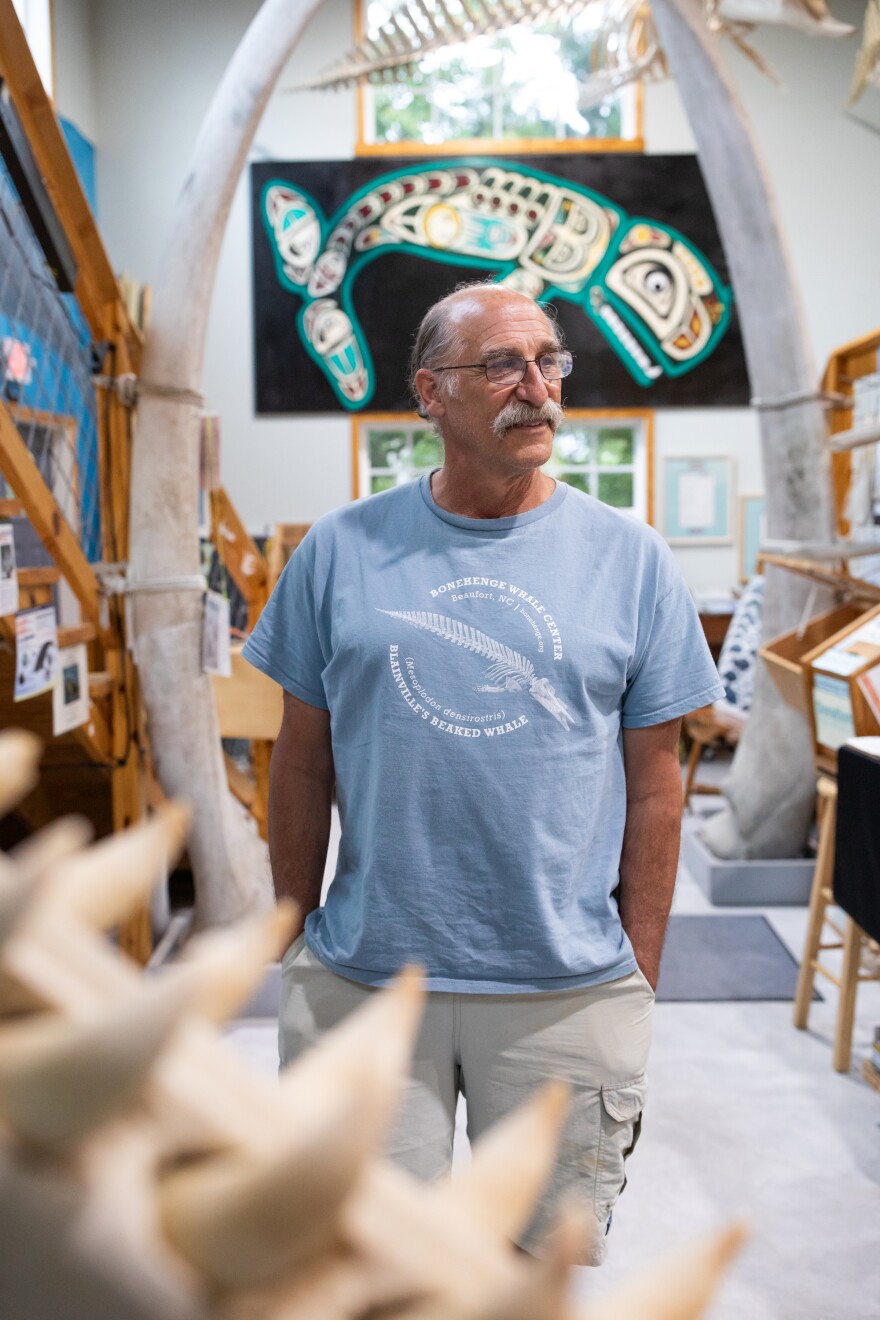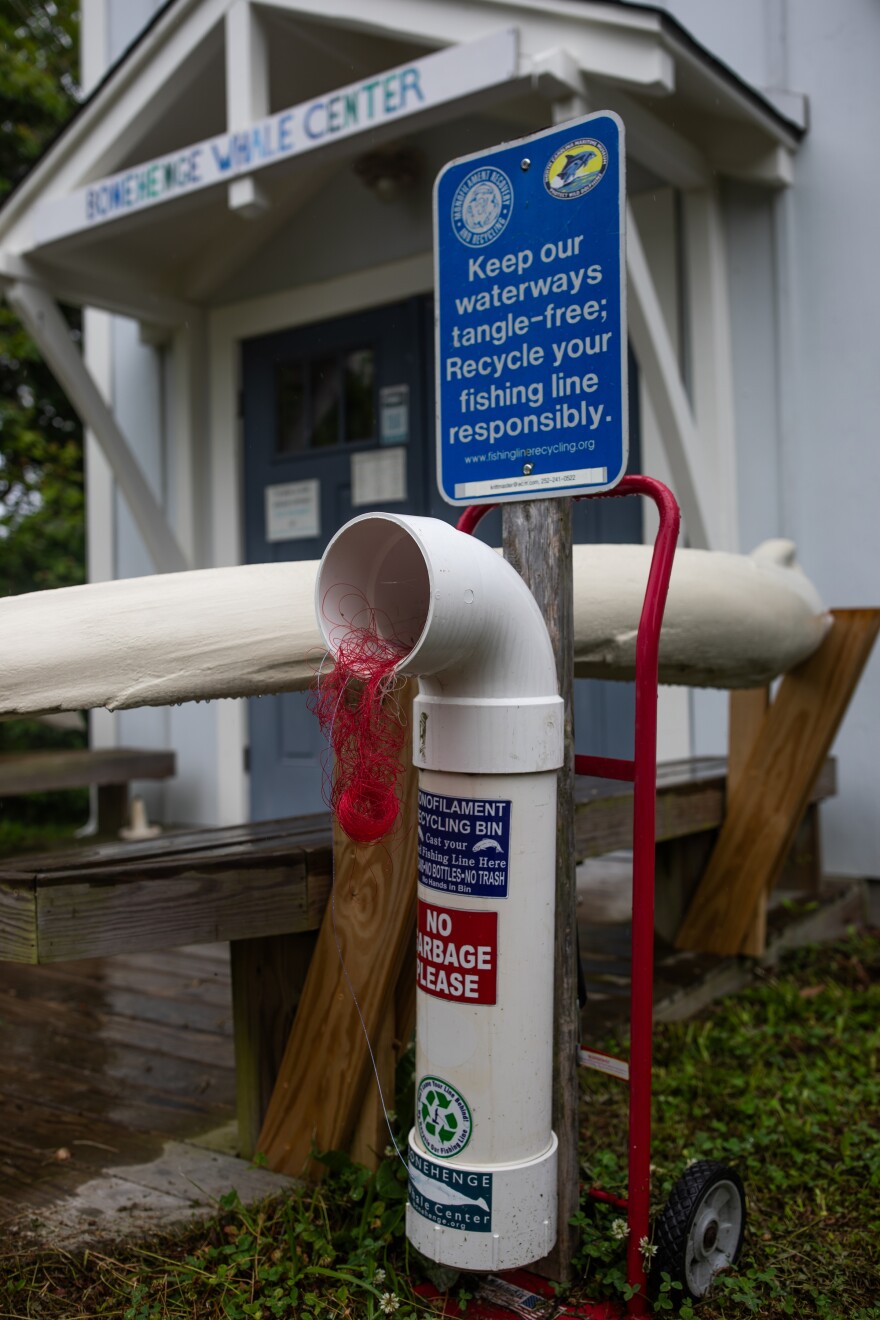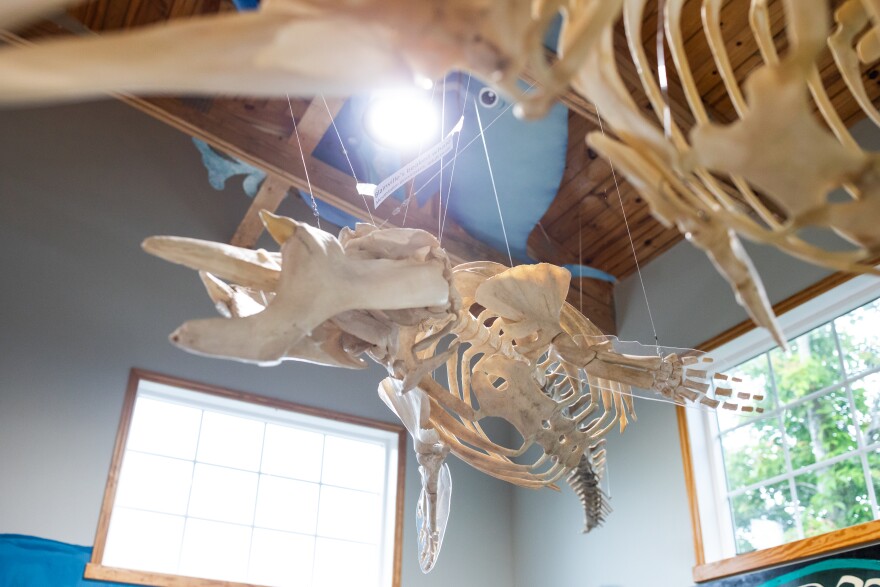Nestled off the foot of the Beaufort Highrise Bridge, about a three-hour drive from Raleigh, sits a modest house-like building. The structure is surrounded by trees, and just a few feet away sit boat docks and the N.C. Maritime Museum Gallants Channel Annex.
This is the Bonehenge Whale Center, a place where scientists, volunteers, and community members meet to conduct conservation and education efforts around whales, dolphins, and porpoises.
"We want people to come in and see this," said Cary Spencer, who's been volunteering at Bonehenge for more than five years. "It is one of the most unique places anybody could ever see. You can't help but be fascinated by it."
How Bonehenge became Bonehenge
Before Bonehenge existed in its current form, Keith Rittmaster was collecting the bones for years.
"We were working out of a double wide trailer with no ventilation (or) running water," Rittmaster said. "Some (bones) were in storage units. Some were in friends' garages."
Rittmaster, 68, is the eccentric director of Bonehenge, although the formal title likely leaves him squirming uncomfortably.
"The coolest thing from my perspective about this facility is that it was built by volunteers," he said energetically last May. "Their names are on the entry and those are the people I'm serving."
In April 2017, community members pooled their resources and bought the land that Bonehenge sits on now. Later that year, a $300,000 grassroots fundraiser was launched for construction of the building. A groundbreaking ceremony was held in May 2018, and over the next three years, volunteers helped make this facility a reality.

"It had the feel of a community barn raising, and that's what it was," said Rittmaster. "No government anything. No corporate anything. They put me in charge, which I'm honored to do."
Since the 1980s, Rittmaster has worn several hats: a fishery biologist developing photo identification research on bottlenose dolphins; a professor teaching field research courses; and a natural science curator at the N.C. Maritime Museum, to name a few. He's still doing all this work today in different capacities.
Despite his own impressive resume, Rittmaster emphasizes that collaboration with several partner organizations is what makes Bonehenge possible. Some of those groups include the N.C. Division of Marine Fisheries, Duke Marine Lab, and the NC Marine Mammal Stranding Network. The network's director is Rittmaster's wife, Vicky Thayer, an environmental and conservation biologist whose resume is equally as impressive.
"It's not (just) one person or one organization," he said. "It's people working together on a project that's much bigger than (what) one team ... can solve."
What to know about Bonehenge
- It’s free and open to the public. The center welcomes visitors to come learn about whales, dolphins and porpoises.
- The Center was built by volunteers. Through grassroots organizing and fundraising, community members funded the construction of the building and bought the land it sits on now.
- Mostly all the bones on display are from animals that were stranded along the North Carolina coast. Usually, these animals died because of human related interference, like a ship strike or ingesting litter.
Bonehenge wants to conserve stories, educate the public
Nearly all the bones on display at Bonehenge are from North Carolina strandings of whales, dolphins or porpoises. Rittmaster can describe the heartbreaking stories in exact detail.
There's an unnamed Gervais's beaked whale, whose stomach was empty because she accidentally ingested a deflated nylon balloon, preventing her from eating. There's also Pitfall, a three-year-old humpback whale whose skull broke in half when a ship hit her, likely without noticing. Or there's Lionel, a bottlenose dolphin who became entangled in discarded fishing line at six months old, forcing his bones to grow around the line that was killing him.
Volunteer Cary Spencer said as painful as the stories are, it's necessary dialogue for people to understand the harsh reality.
"We want people to be fascinated by it because we want people to care," said Spencer. "You can't care if you don't know about it. And we can't make changes if people don't care."
Volunteers like Spencer help assemble skeletons that will be sent to other educational institutions, like a museum or a school. She enjoys the work, describing it as interesting and fascinating.

"You're always learning, and it's fun to think that I'm working on something that will outlive me," Spencer said.
Ways to help: recover fishing lines, balloon bans
Of the stranded whales, dolphins, and porpoises found along the North Carolina, several of those deaths can be easily attributed to human activity. Rittmaster argues there are easy solutions to some of these problems. For example, don't release balloons at the beach and don't throw fishing line into the ocean. He calls both of those littering.
"There's a lot of horrible things we're doing to this Earth, and we're seeing the consequences," said Rittmaster. "I just (have) to convince myself these aren't bad people (who are littering). They just don't know. And if they knew, they wouldn't do that."
To encourage the public to recycle their fishing line, Rittmaster helped launch the North Carolina Monofilament Recovery and Recycling Program.
Through the program, there are approximately 30 receptacles along the coast of North Carolina. Volunteers help pay for, install and maintain the receptacles. So far, the program has collected about 4,500 miles of line.
Ultimately, Bonehenge is a physical place and a community, made up of humans and whales alike.









